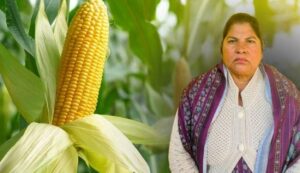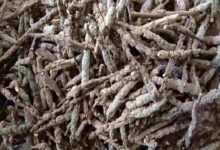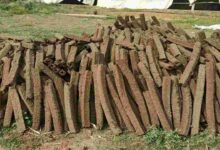Success Story: Know how Meena Kumari achieved great success with improved maize seeds
Success Story: Due to its usage for food, feed, and fuel, maize is becoming more and more in demand in India. Its ethanol is used to make fuel, which is then mixed with gasoline. Farmers are becoming more interested in growing maize as a result of the rising demand for the grain for ethanol and poultry feed. However, if a farmer is growing maize, he should first make arrangements for better seeds.

Increased productivity will result from this, increasing profit. Meena Kumari, a farmer from Jhandi village in Gurdaspur, Punjab, produced 20 quintals per acre thanks to high-quality seeds; other farmers in the region who used indigenous types produced just 12–14 quintals per acre. The production of improved seed types and local variants has clearly differed.
Significant Advantages of Enhanced Seeds
Despite the availability of high-quality seeds, Gurdaspur’s farmers have traditionally relied on indigenous seeds for growing maize. Due to Meena Kumari’s reliance on conventional seed kinds, farming did not provide much profit. However, as part of a study titled “Increasing Maize Production in the Catchment Area of Ethanol Industries,” the Indian Institute of Maize Research (IIMR) dispersed pioneer seeds during the Kharif season of 2024. The cultivation of maize changed significantly as a result of this project. Meena Kumari benefited greatly from adopting better seeds.
How did she get enormous profits from farming?
Meena Kumari received 16 kg of pioneer maize seeds and an input package as part of the experiment, according to IIMR Director Dr. Hanuman Sahay Jat. This also included cutting-edge herbicides, including corazine, atrazine, and tinzer. In addition to offering these resources, the project’s experts placed a strong emphasis on using innovative agricultural methods. Meena Kumari, a female farmer, took part in the project’s workshops to spread knowledge about integrated pest control, irrigation management, and appropriate spacing, among other excellent agricultural practices.
Motivation for the Agricultural Community
Meena Kumari planted the Pioneer maize seed on a 2-acre field, which was different from her prior experiences with local varieties, according to SL Jat, a prominent maize scientist involved in the experiment. Meena Kumari’s land was shown as an example for other farmers to follow as part of the initiative. Her land was often visited by other farmers who saw the shift in agricultural practices from conventional seeds. Using indigenous seeds, other farmers contrasted Meena Kumari’s field with their own.
Pioneer maize seed yields higher quality and yields more
Meena Kumari’s efforts had life-changing outcomes. She produced 40 quintals from her 2-acre field using the Pioneer seeds, yielding 20 quintals per acre. The output of indigenous cultivars, on the other hand, was just 12 to 14 quintals per acre, according to local farmers. Meena Kumari’s farm produced maize of excellent quality, and because of its consistent grain size, it sold well. Meena Kumari’s affiliation with Self Help Groups (SHG) is another facet of her journey. wherein she spoke about her experience farming.
Higher revenue from better seeds
Meena Kumari made a nice living by selling her crops to Rana Sugar Limited. Her earnings of Rs 135,000 were higher than those of the previous season. In the next season, around fifteen of her nearby farmers similarly made the decision to plant enhanced maize seeds rather than conventional ones.
A source of motivation for farmers
Since other farmers have seen Meena Kumari’s farming as a model, her success story really extends beyond her own advantages. Other farmers may learn from this as well how better seeds might boost earnings.

